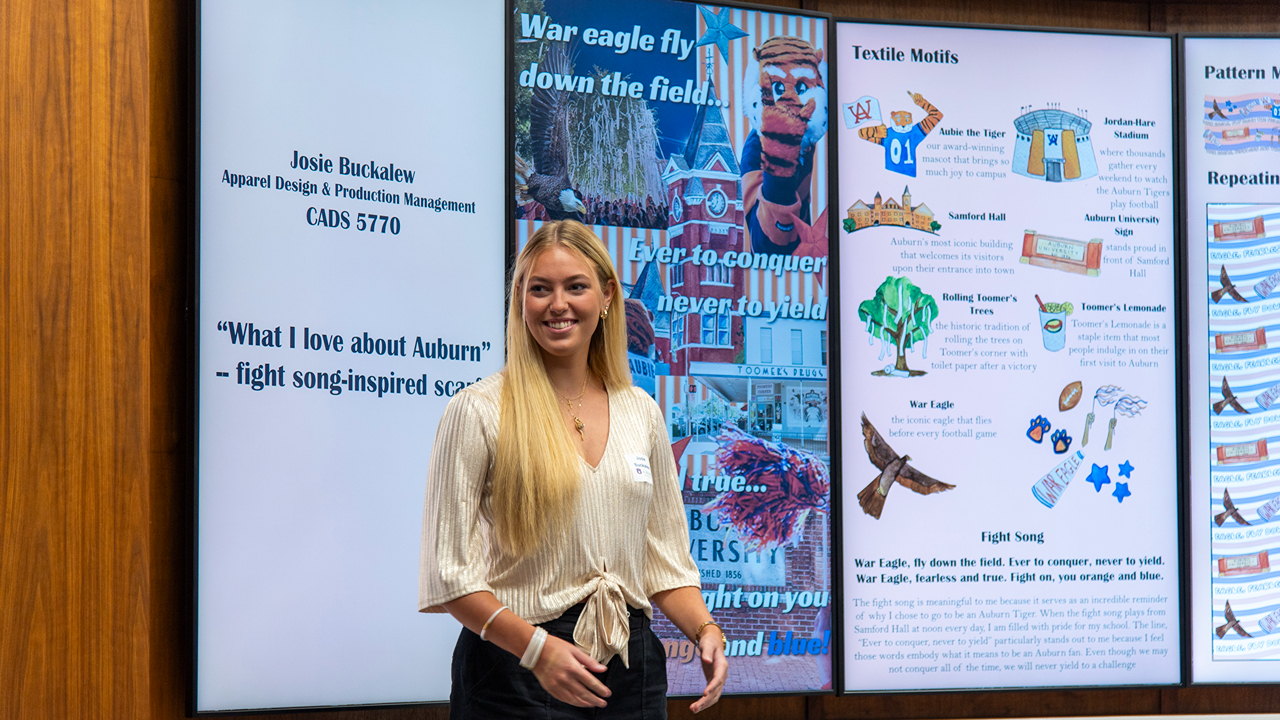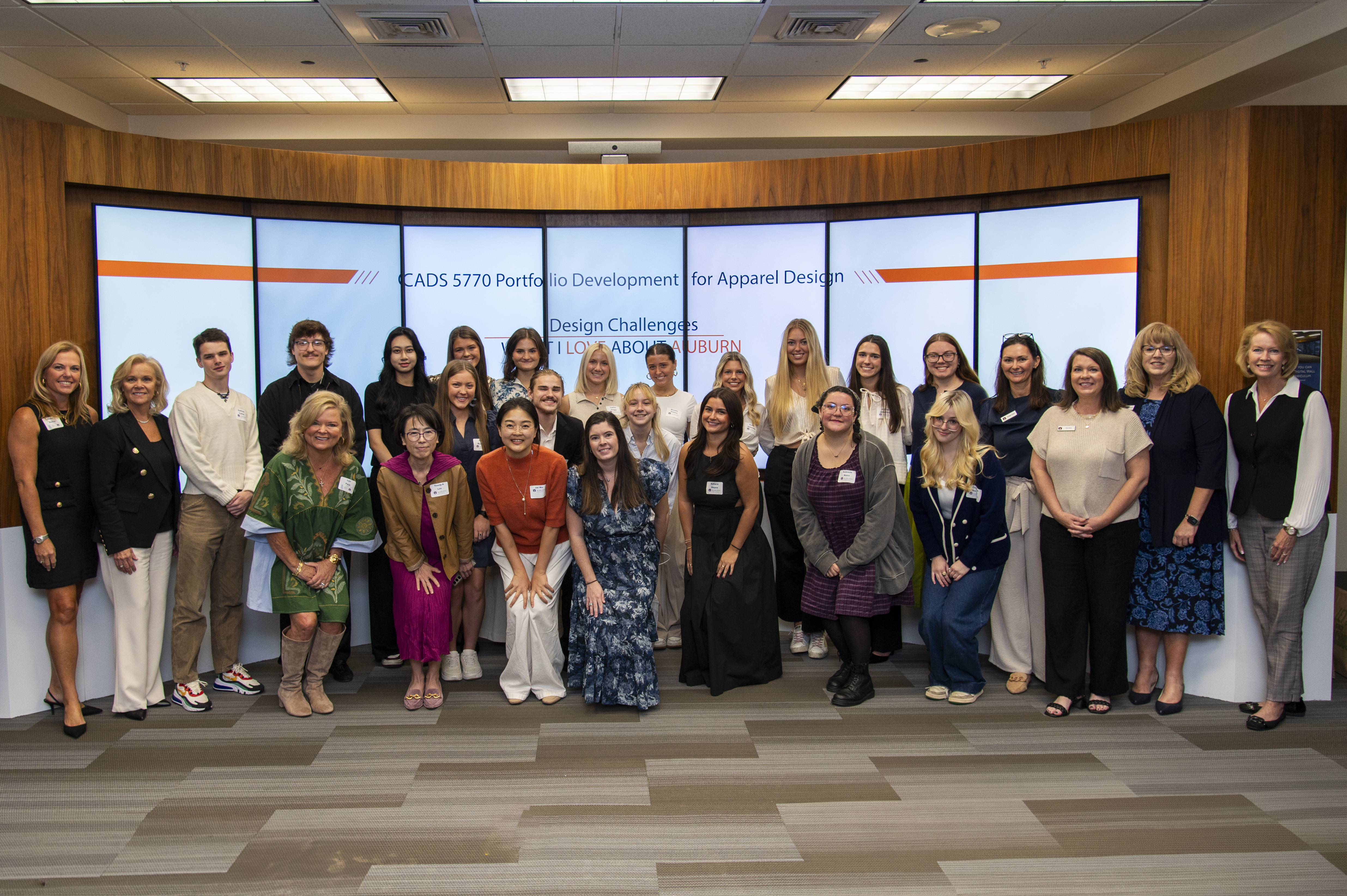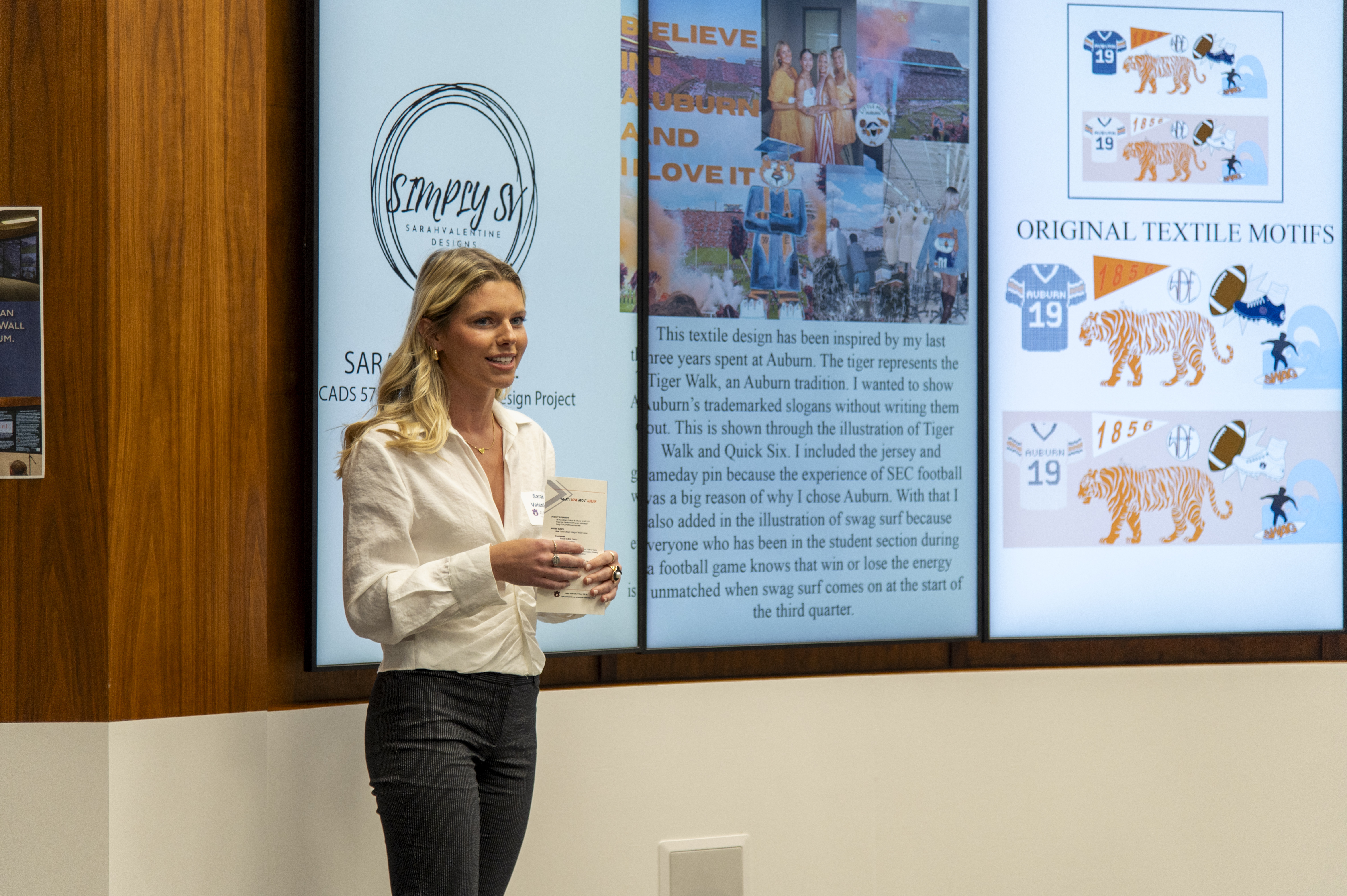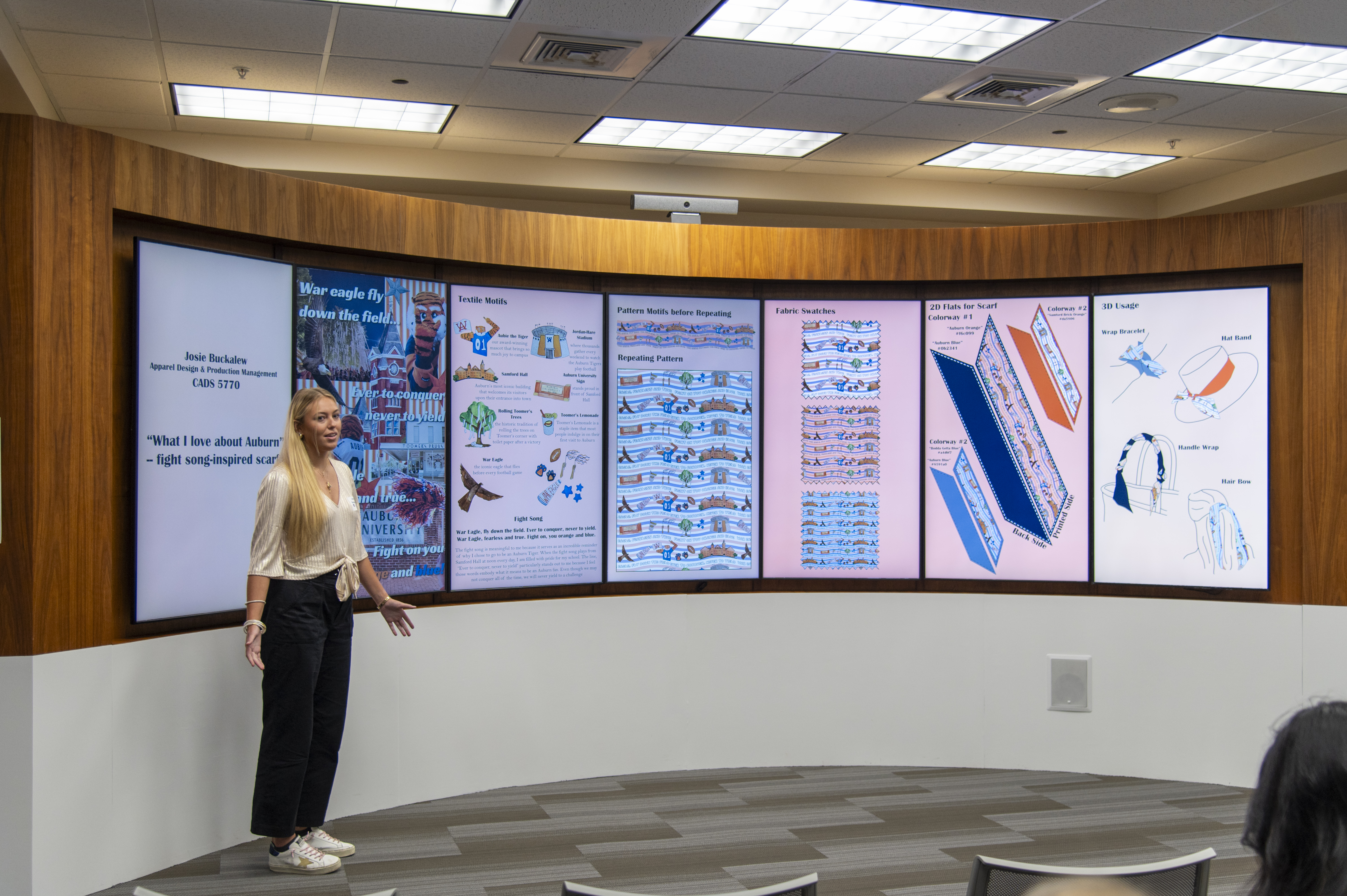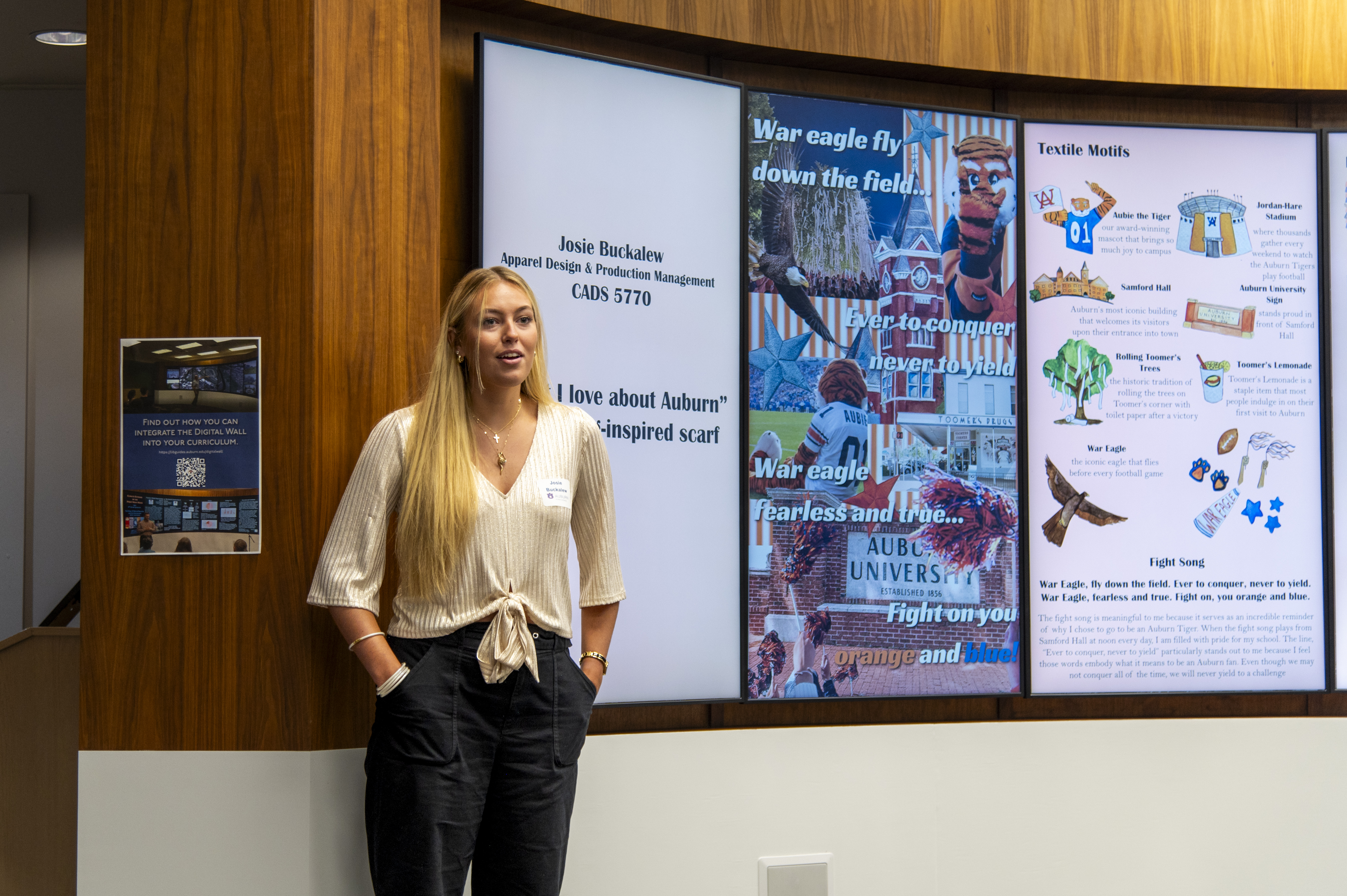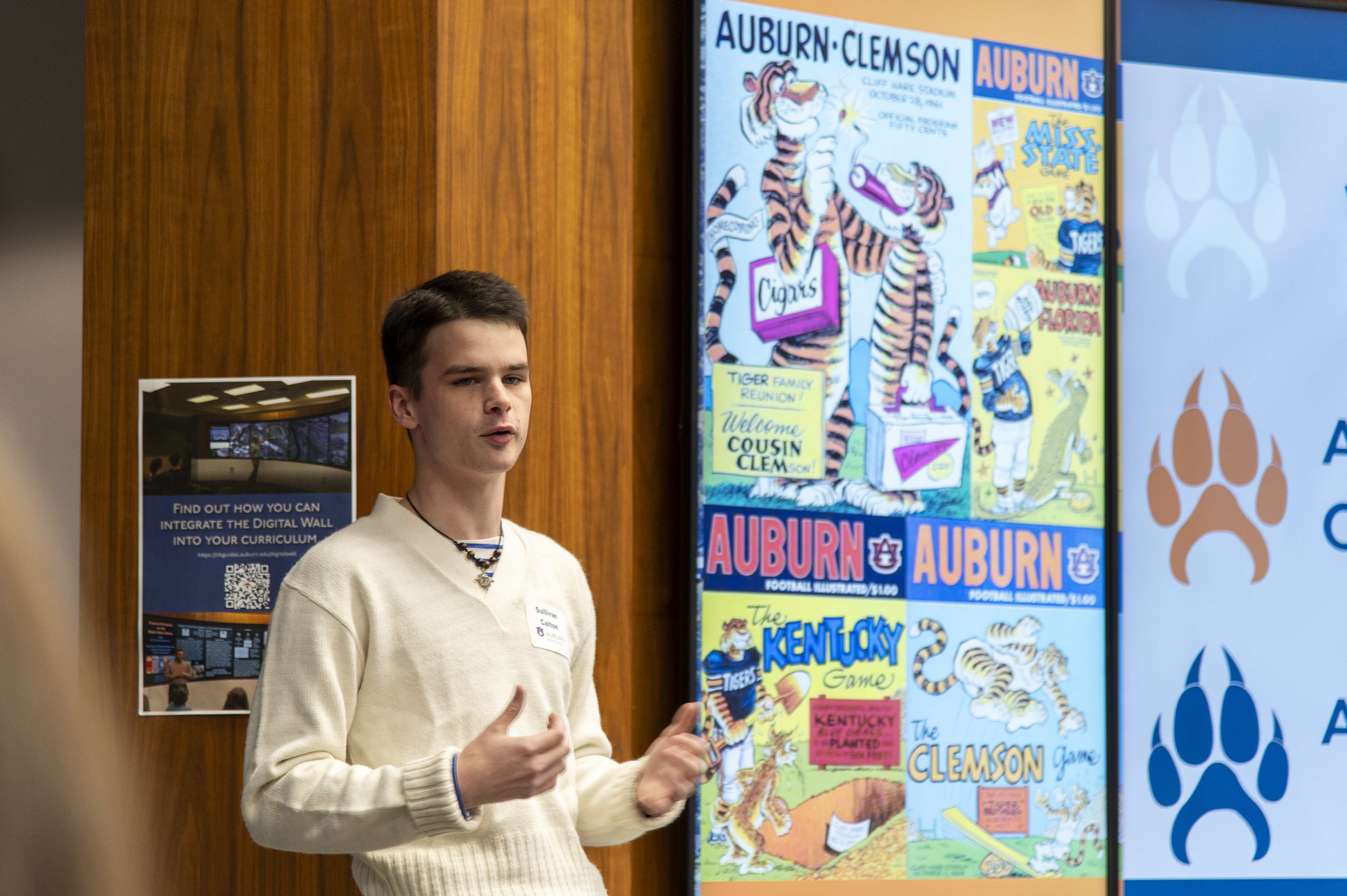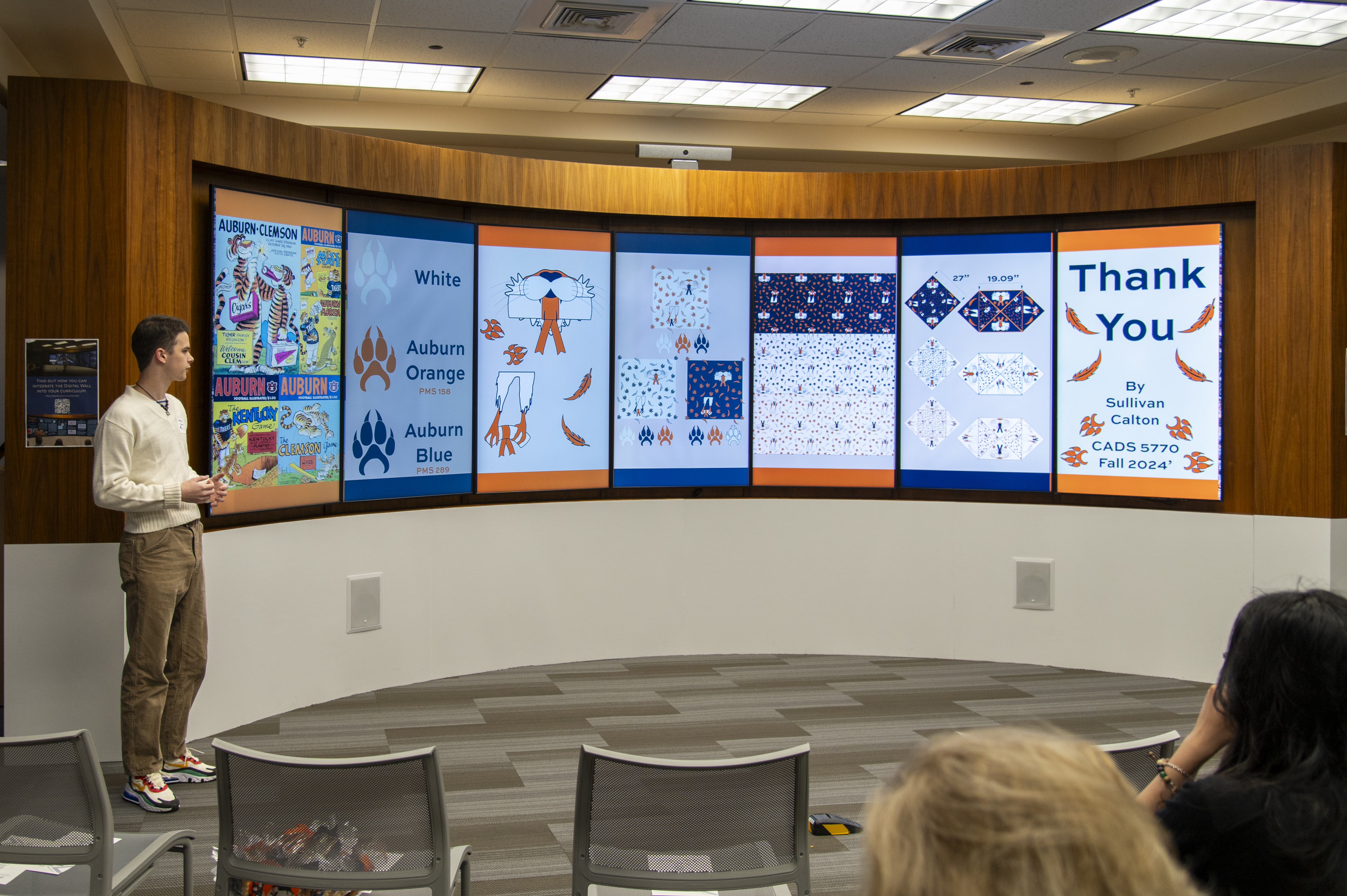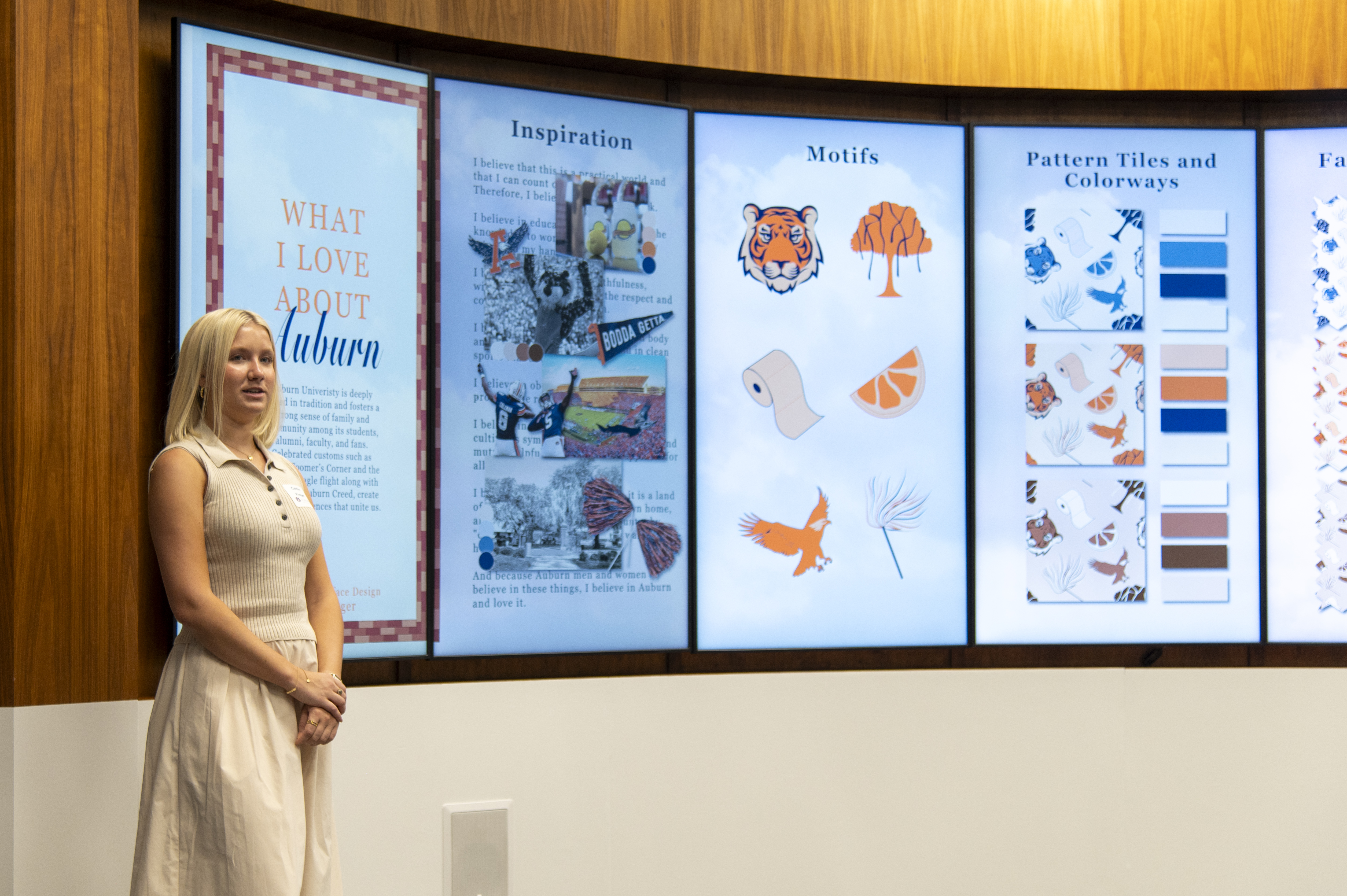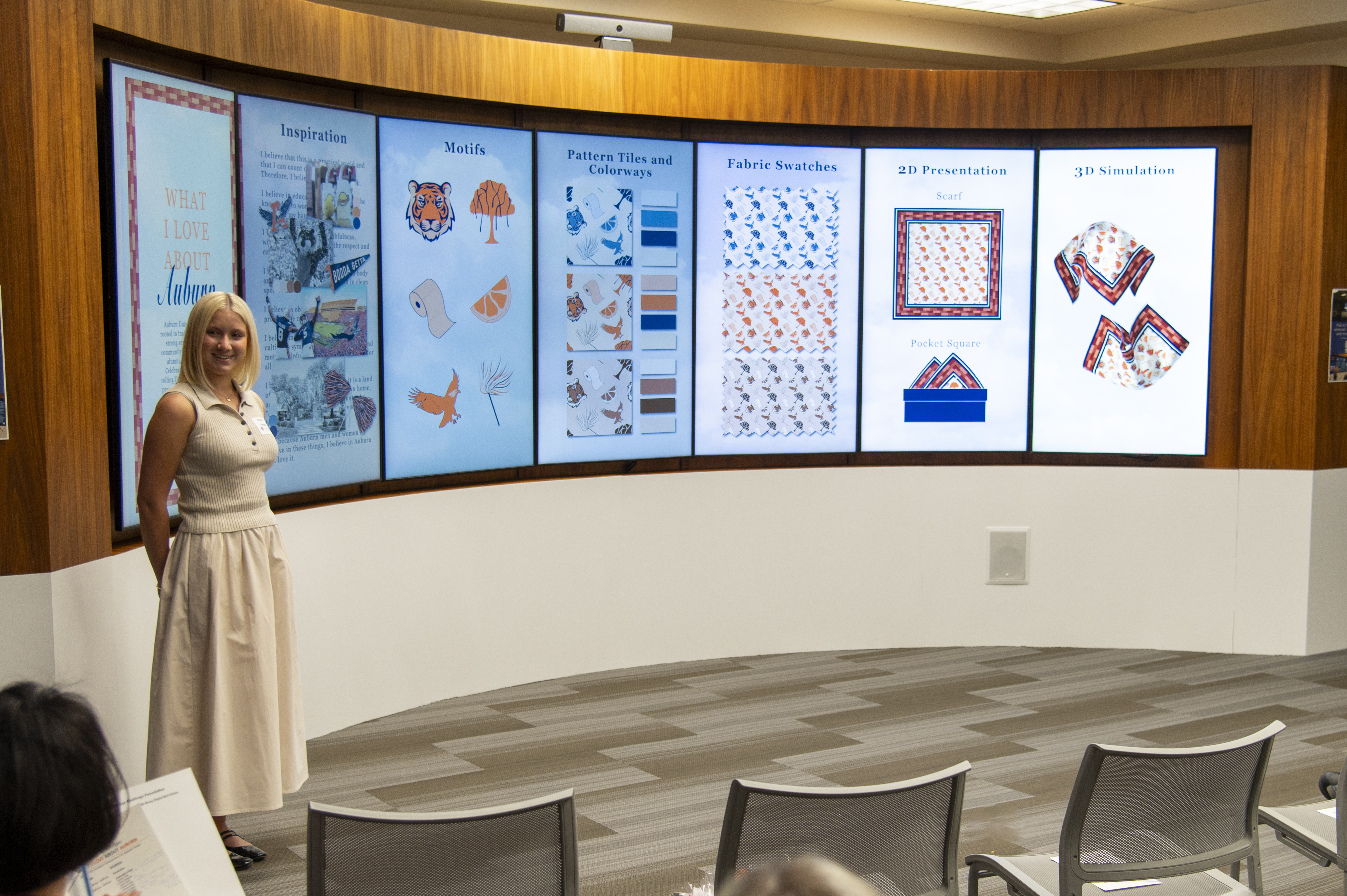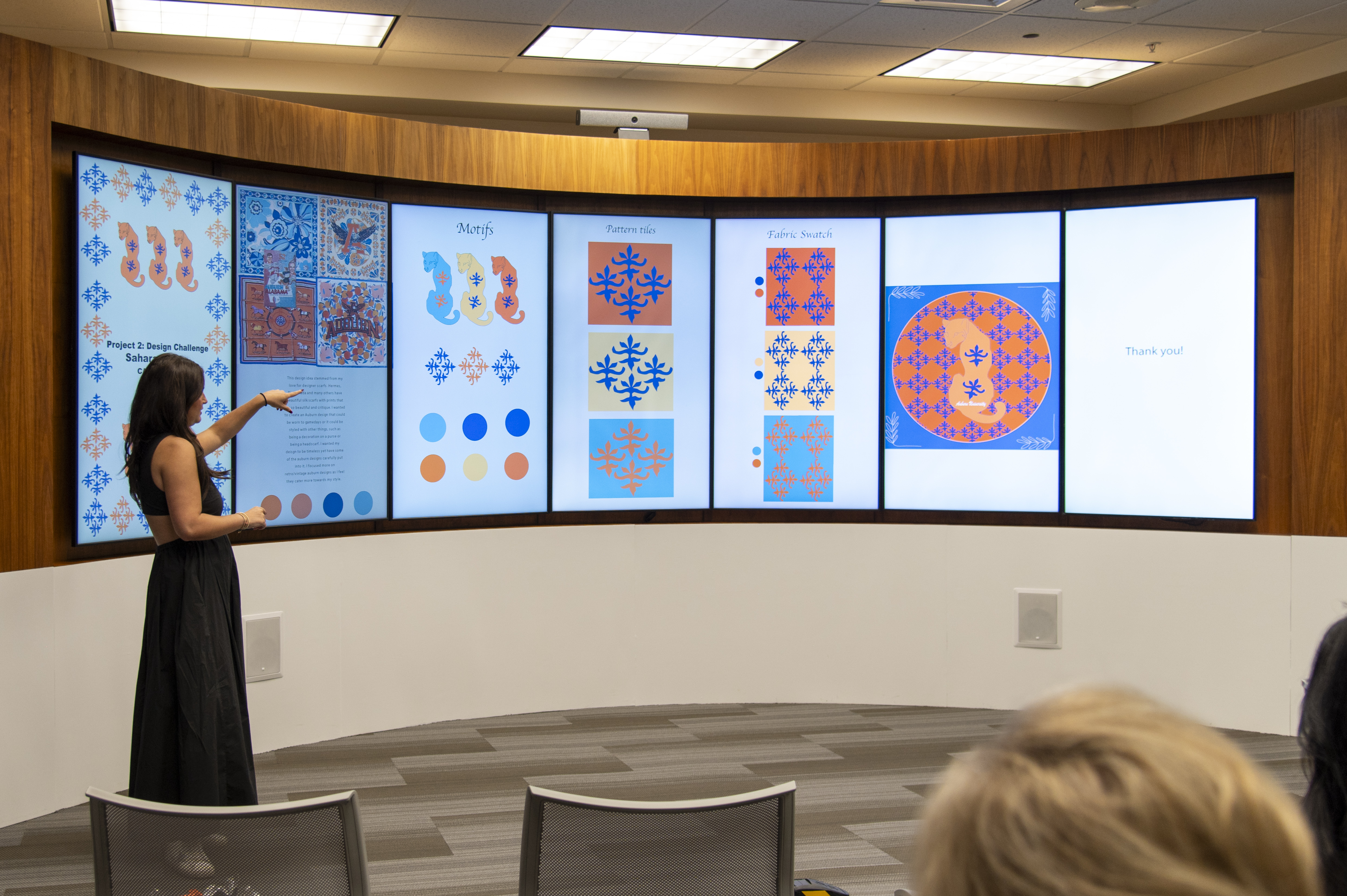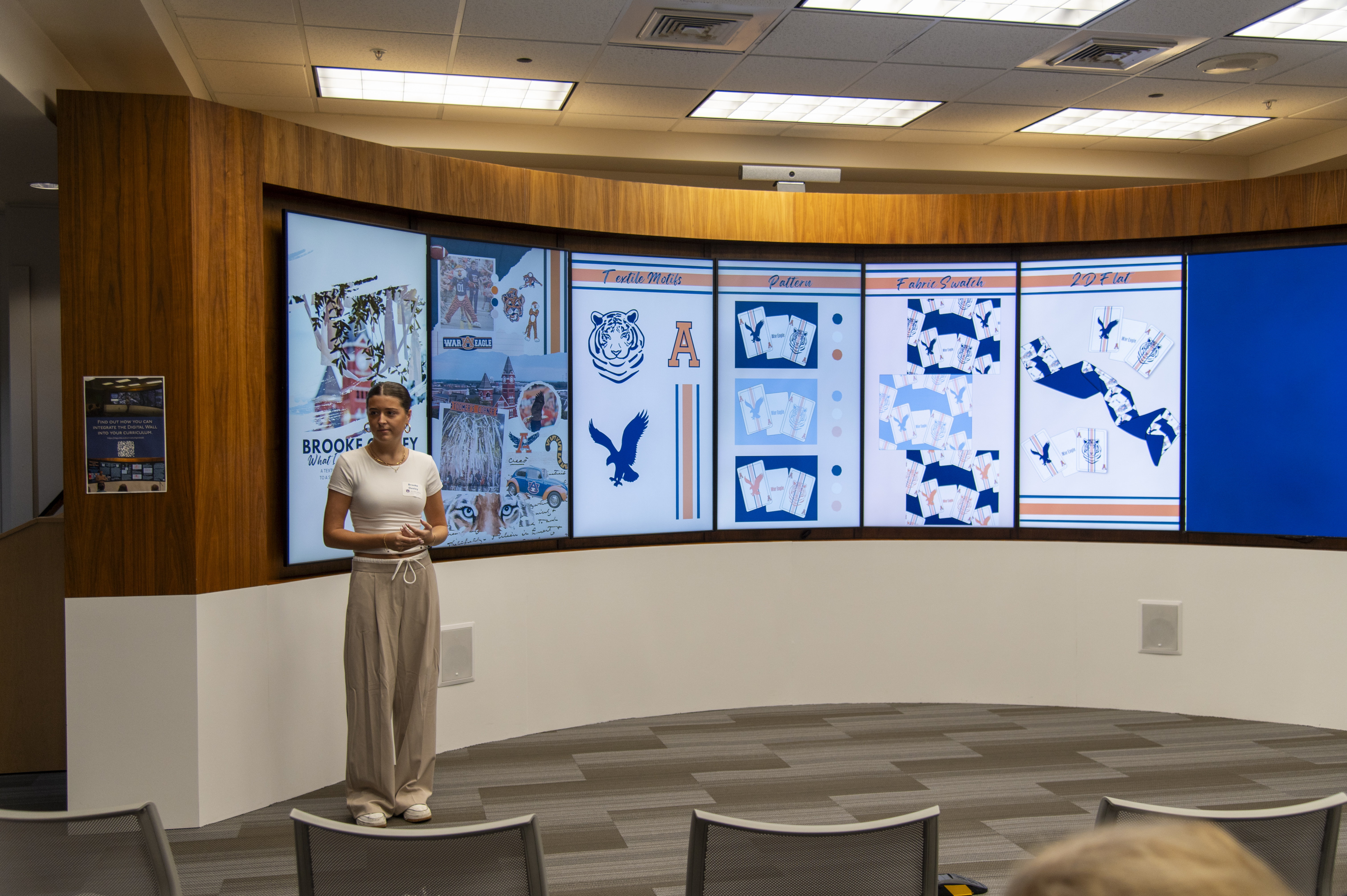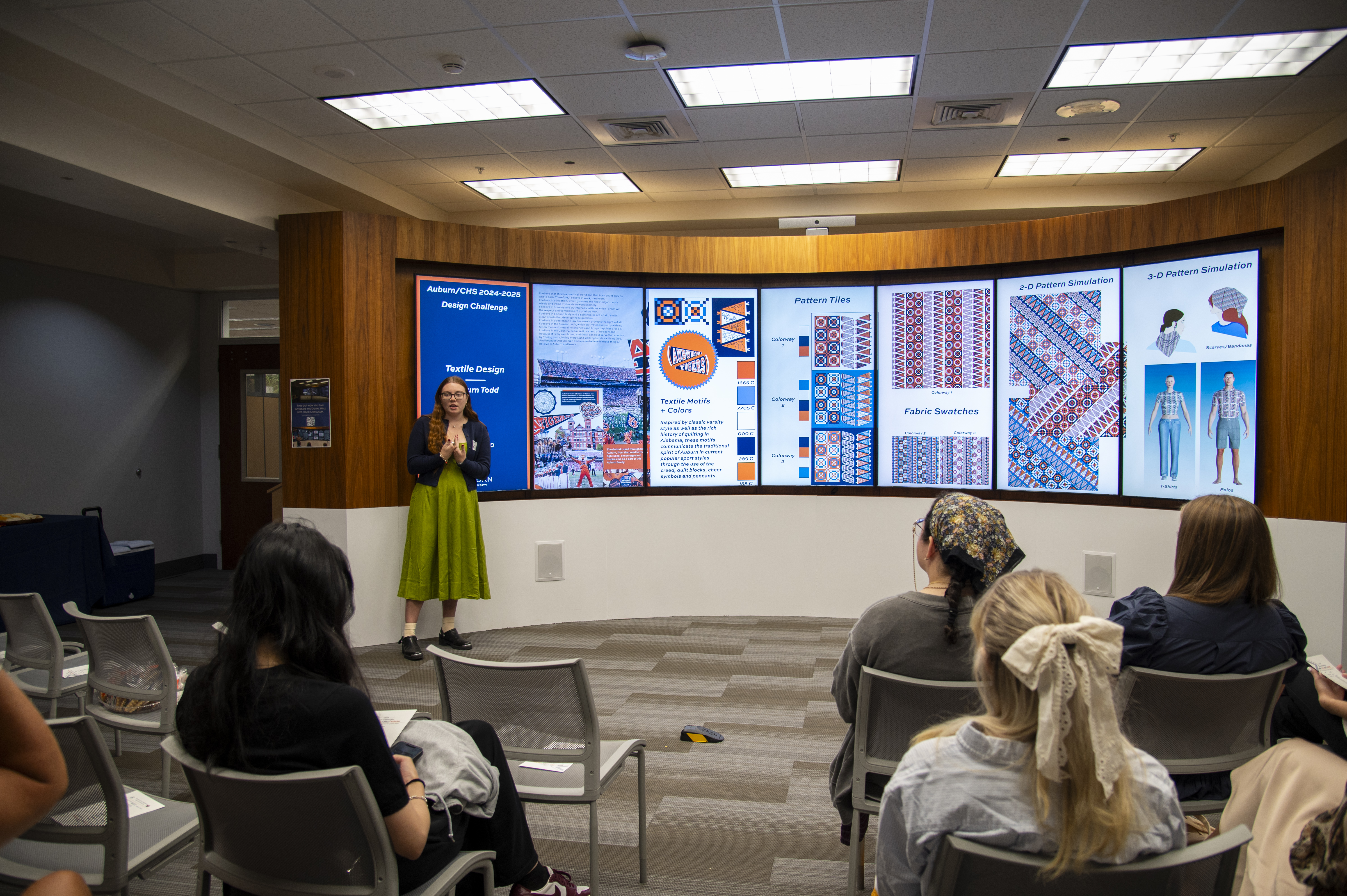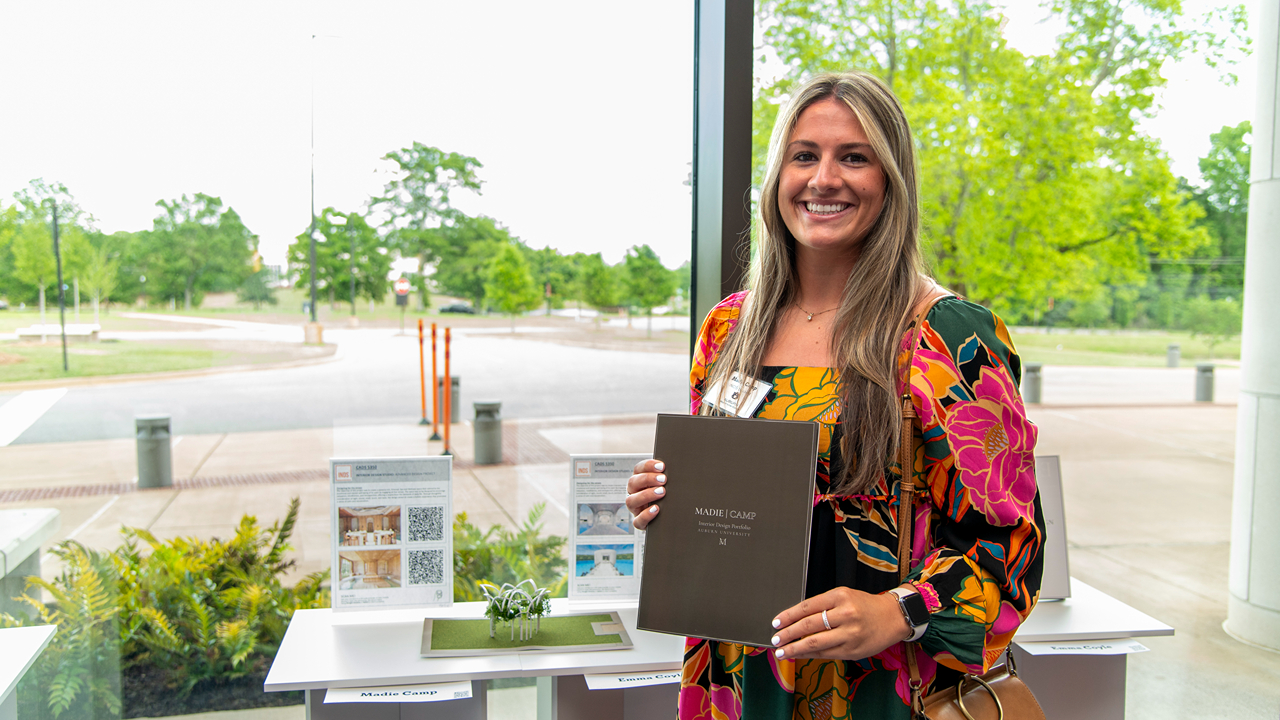content body
Textile patterns, 2D fabric swatches, 3D product simulations, colorways and more came alive with the Auburn spirit on Oct. 8 on the digital wall inside the Ralph Brown Draughon Library. The culmination of two weeks of work was on display as College of Human Sciences upperclassmen took part in an apparel design challenge presentation.
The students, instructors and select invited guests serving as judges viewed the design presentations themed, “What I love about Auburn” as part of the Consumer and Design Sciences (CADS) 5770 Portfolio Development for Apparel Design course.
When a student or alumni is asked the question, “What do you love about Auburn?” The answers can vary between a few special traditions, the family or community feel, athletic teams, academics and so much more.
In a span of about two weeks, 23 CADS students used their apparel design expertise to come up with their own unique textile/surface designs transferred onto wearable items such as scarfs, handkerchiefs, pocket squares, polos, sleepwear, beanies, neck ties and more that resembled reasons why they personally love Auburn.
The end results included plenty of orange and navy patterns and designs, but even some pink and green resembling the vibrancy of Auburn’s campus when the azaleas begin to bloom on The Plains in the springtime or incorporating the deep red brick pattern that many buildings on campus synonymously share.
Josie Buckalew, a junior majoring in apparel design and production management, used inspiration from Auburn’s fight song when putting together her design challenge presentation.
“I chose to do my project around the fight song because I felt like I could use more symbolism so that’s what I drew my inspiration from and I could create Auburn inspired motifs,” Buckalew said. “Doing this project as Auburn inspired was nice because last semester when we learned to do repeating patterns and do projects like this it was more of find inspiration where you can. With this, I felt like it was important to all of us to be able to do a project about Auburn.”
Using words from Auburn’s fight song, Buckalew’s design presentation was uniquely Auburn as her repeating pattern was shown being used as a wrap bracelet, hat band, handle wrap and hair bow.
The design challenge was an idea created by members of the College of Human Sciences Development team. Using feedback from the judges, one or two of the best student designs from the challenge will be selected and then created for real wearable products such as scarfs and pocket squares that will be distributed to College of Human Sciences donors as gifts during the holiday season.
Sullivan Calton, a senior majoring in apparel design and production management, took a different route with his design by incorporating the Auburn spirit along with academics. Calton initially began his journey at Auburn studying computer science but ultimately switched his major to apparel design and production management and he hasn’t looked back since.
He wanted his design to embody the Auburn spirit but the meaning to go well beyond football. The result was a design featuring Aubie and an eagle seizing a diploma in a pattern that would be catered more toward men’s sleepwear if put into production.
“I knew I wanted my idea to be Aubie related because Aubie is such a character throughout the college world, but I didn’t want my design to necessarily scream football,” Calton said. “So much of Auburn is football, but also there’s so much more besides that. I think when someone outside of the south see’s Auburn they might think football, but we are the pinnacle of engineering in the south and one of the best academic schools, so I really wanted to celebrate that as well. Thinking of that, I brought it all together and I came up with the idea of a tiger and an eagle seizing a diploma.”
College of Human Sciences Dean Susan Hubbard also stopped by to view the presentations and emphasized to the students that this is another example of high-impact practices being put in place.
“This is a real-world project and it’s another way to share to the outside world what you are learning and doing in the classroom,” Hubbard said. “It’s taking something you would see in the real-world and making it happen so when you are interviewing for future jobs you can say ‘I was a part of this really cool project where I had to design and present’ and that’s what the real-world is about. Because of projects like this, we can tell our story in human sciences better and showcase your work.”
For more information on the Department of Consumer and Design Sciences, click below.
Department of Consumer and Design Sciences


